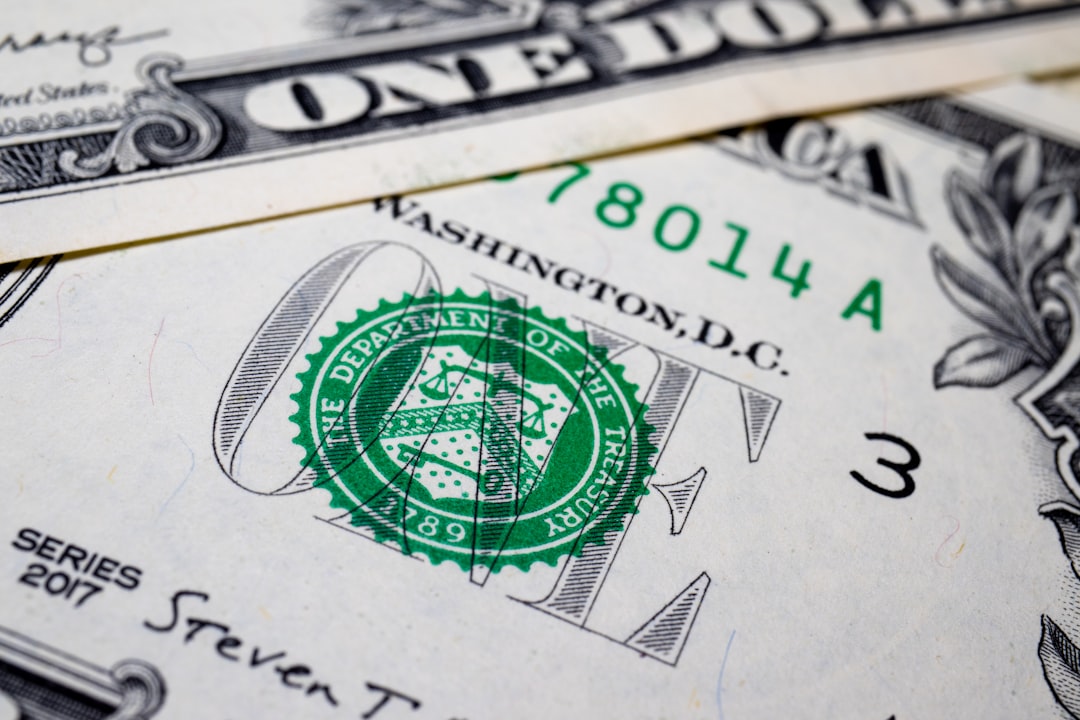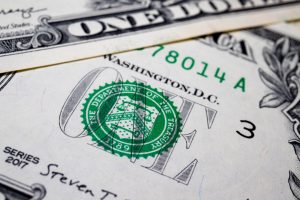Understanding the Dollar’s Weak Start: A Beginner’s Guide
Discover why the dollar is struggling this year in our beginner’s guide. Unlock insights and boost your financial understanding today.
Introduction
Overview of the Dollar’s Performance
The U.S. dollar, often regarded as a global reserve currency, has experienced a weak start this year.
This trend has raised concerns among investors and policymakers alike, as the dollar’s performance can have broad implications for global trade, investment, and economic stability. Understanding the reasons behind this decline is crucial for stakeholders across various sectors.
Factors Influencing the Dollar’s Weakness
Several factors have contributed to the dollar’s lackluster performance.
Economic indicators, such as inflation rates and employment figures, play a significant role in shaping currency strength. Additionally, monetary policy decisions by the Federal Reserve, including interest rate adjustments, can significantly impact the dollar’s value.
Moreover, geopolitical tensions and trade policies have also influenced market perceptions and investor confidence, further affecting the dollar’s standing in the global market.
These elements, combined with the actions of other major economies, create a complex landscape that affects currency valuations.
Implications for the Global Economy
The dollar’s weakness can have far-reaching effects on the global economy. For countries that rely heavily on exports to the United States, a weaker dollar can lead to reduced competitiveness and lower revenue.
Conversely, for U.S. exporters, a weaker dollar can enhance competitiveness abroad, potentially boosting sales and economic growth.
Additionally, fluctuations in the dollar’s value can impact global financial markets, influencing investment flows and asset prices.
Investors and businesses must navigate these changes carefully to mitigate risks and capitalize on potential opportunities.
The Role of Market Sentiment
Market sentiment is a crucial factor in currency valuation, and the dollar is no exception. Investor perceptions about the U.S.
economy’s health and future prospects can drive demand for the dollar, influencing its strength or weakness. Recent market trends suggest a cautious outlook, with some investors seeking safer or more profitable alternatives.
Understanding these sentiment-driven dynamics is essential for predicting future movements in the dollar’s value.
As global economic conditions evolve, keeping a close eye on market sentiment will be vital for anticipating currency trends.
Explanation
Economic Indicators and Data
One of the primary reasons the dollar is experiencing a weak start this year is due to recent economic indicators and data releases. Key metrics such as GDP growth, employment figures, and inflation rates have not met market expectations, leading to a decrease in investor confidence.
For instance, a slowdown in GDP growth suggests that the economy is not expanding as robustly as anticipated, which can weaken the currency.
Additionally, employment reports showing fewer jobs added than predicted can signal underlying economic issues. Inflation rates that are either too high or too low can also impact the dollar’s strength, as they influence the Federal Reserve‘s monetary policy decisions.
Federal Reserve’s Monetary Policy
The Federal Reserve‘s stance on monetary policy plays a significant role in the dollar’s performance.
If the Fed adopts a dovish approach, indicating a reluctance to raise interest rates, it can lead to a weaker dollar. Lower interest rates make the currency less attractive to investors seeking higher returns, prompting them to look elsewhere.
Conversely, if the Fed signals potential rate hikes, it could strengthen the dollar.
However, recent communications from the Fed have suggested a cautious approach, focusing on supporting economic recovery, which may contribute to the dollar’s current weakness.
Global Economic Conditions
Global economic conditions also influence the dollar’s value. When other major economies, such as the Eurozone or China, show signs of recovery or strength, their currencies may appreciate against the dollar.
This shift can be attributed to increased investor confidence in those regions, leading to a reallocation of assets away from the dollar.
Trade tensions, geopolitical events, and international agreements can further impact global economic dynamics, affecting the dollar’s standing in the foreign exchange market.
Market Sentiment and Speculation
Market sentiment and speculative activities can significantly sway the dollar’s trajectory. If traders and investors collectively anticipate a weaker dollar based on current trends and data, their actions can create a self-fulfilling prophecy.
Selling off the dollar in favor of other currencies can exacerbate its decline.
Furthermore, speculative trading, driven by short-term profit motives, can lead to increased volatility and contribute to the dollar’s weak performance at the start of the year.
How-To Navigate the Weak Dollar
Understanding the Causes
Before taking any action, it’s crucial to understand why the dollar is weak. This year, several factors have contributed to the dollar’s sluggish start.
Economic policies, trade imbalances, and geopolitical tensions are some of the primary reasons. Additionally, shifts in global economic power and changes in interest rates have also played a significant role.
By keeping informed about these underlying causes, individuals and businesses can better anticipate future movements and make informed decisions.
Diversifying Investments
One of the most effective strategies to mitigate the impact of a weak dollar is to diversify investments.
Consider allocating assets in foreign currencies or investing in international markets. This approach can help balance the risks associated with currency fluctuations.
Investing in commodities such as gold, which often appreciates when the dollar is weak, can also be a prudent strategy.
By spreading investments across various asset classes, you can protect your portfolio from the adverse effects of a declining dollar.
Adjusting Business Strategies
For businesses, a weak dollar can present both challenges and opportunities. Exporters may benefit from increased competitiveness abroad, while importers might face higher costs.
Adjusting pricing strategies and exploring new markets can help businesses adapt to these changes.
Additionally, businesses should consider hedging against currency risks. Financial instruments such as forward contracts and options can provide a buffer against unfavorable currency movements, ensuring more predictable financial outcomes.
Travel and Expenditure Considerations
For individuals planning international travel, a weak dollar means higher expenses abroad.
To navigate this, consider traveling to countries where the local currency is also weak or where the cost of living is lower.
Additionally, monitoring exchange rates and purchasing foreign currency in advance when rates are favorable can help manage travel costs. Being flexible with travel plans and exploring budget-friendly options can further mitigate the financial impact.
Leveraging Technology and Resources
In today’s digital age, numerous tools and resources can help individuals and businesses navigate a weak dollar.
Currency converter apps, financial news platforms, and investment analysis tools provide real-time data and insights.
Staying informed and leveraging these technologies can empower decision-making and ensure that you are well-prepared to handle the challenges and opportunities presented by a weak dollar.
Precautions to Take or Examples to Consider
Monitor Economic Indicators
Investors and businesses should keep a close eye on key economic indicators such as inflation rates, employment figures, and GDP growth. These indicators can provide insights into the economic health of the United States and influence the strength of the dollar.
For instance, rising inflation without corresponding wage growth may signal economic instability, potentially weakening the dollar further.
Diversify Investment Portfolios
Given the dollar’s weak start, it is prudent for investors to diversify their portfolios. This can include investing in foreign currencies, commodities, or international stocks.
Diversification can help mitigate risks associated with currency fluctuations and provide a hedge against the dollar’s volatility.
Consider Hedging Strategies
Businesses involved in international trade should consider hedging strategies to protect against currency risk. Using financial instruments like futures contracts or options can lock in exchange rates, providing stability in financial planning despite the dollar’s performance.
This approach can be particularly beneficial for companies with significant exposure to foreign markets.
Stay Informed About Geopolitical Developments
Geopolitical events can have a significant impact on currency values. Staying informed about international relations, trade agreements, and political stability in major economies can help anticipate potential shifts in the dollar’s strength.
For example, tensions between major trading partners or changes in trade policies can lead to market uncertainty, affecting the dollar.
Evaluate Interest Rate Trends
The Federal Reserve’s monetary policy, especially regarding interest rates, plays a crucial role in the dollar’s valuation. Investors should evaluate interest rate trends and Fed announcements to understand their potential impact on the dollar.
A lower interest rate environment may make the dollar less attractive to investors, contributing to its weakness.
Analyze Historical Patterns
Examining historical patterns of the dollar’s performance during similar economic conditions can provide valuable insights. Understanding past trends and their causes can help predict future movements and guide strategic decisions.
For example, analyzing how the dollar reacted in previous periods of economic uncertainty can inform current precautionary measures.
FAQ
Q1: Why is the U.S. dollar experiencing a weak start this year?
A1: The U.S. dollar’s weak start this year can be attributed to several factors. Economic policies, changes in interest rates, and global market conditions play significant roles. For instance, if the Federal Reserve signals a pause or reduction in interest rate hikes, it can lead to a weaker dollar as investors seek higher returns elsewhere. Additionally, geopolitical tensions and trade imbalances can impact investor confidence, leading to fluctuations in currency strength. New investors should keep an eye on these macroeconomic indicators to understand the dollar’s performance better.
Q2: Is it safe to invest when the dollar is weak?
A2: Investing when the dollar is weak can present both opportunities and risks. A weaker dollar can benefit U.S. exporters by making American goods cheaper for foreign buyers, potentially boosting company earnings and stock prices. However, it can also lead to higher import costs and inflation. New investors should consider diversifying their portfolios to mitigate risks associated with currency fluctuations. It’s essential to assess your risk tolerance and investment goals and consult with financial advisors to make informed decisions.
Q3: Should I wait for the dollar to strengthen before investing?
A3: Timing the market can be challenging, and waiting for the dollar to strengthen might not always be the best strategy. Market conditions are influenced by numerous factors, and predicting currency movements with precision is difficult. Instead of focusing solely on currency strength, new investors should consider a long-term investment strategy that aligns with their financial goals. Diversification across different asset classes and regions can help manage risks related to currency volatility. It’s crucial to stay informed and flexible, adjusting your investment approach as market conditions evolve.
Takeaway
Ready to take your first step towards financial growth? Explore beginner-friendly investment platforms, sign up for our weekly tips, or try out our free calculator and planning tool. Start your journey with confidence and let us guide you towards a brighter financial future. Click here to get started today! This move is widely interpreted as a strategic response to recent challenges.





Comments